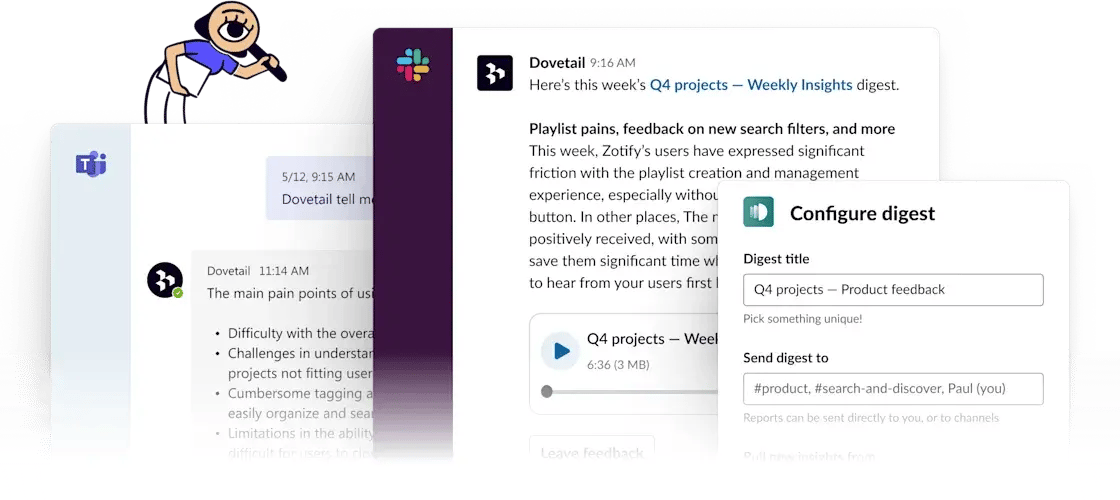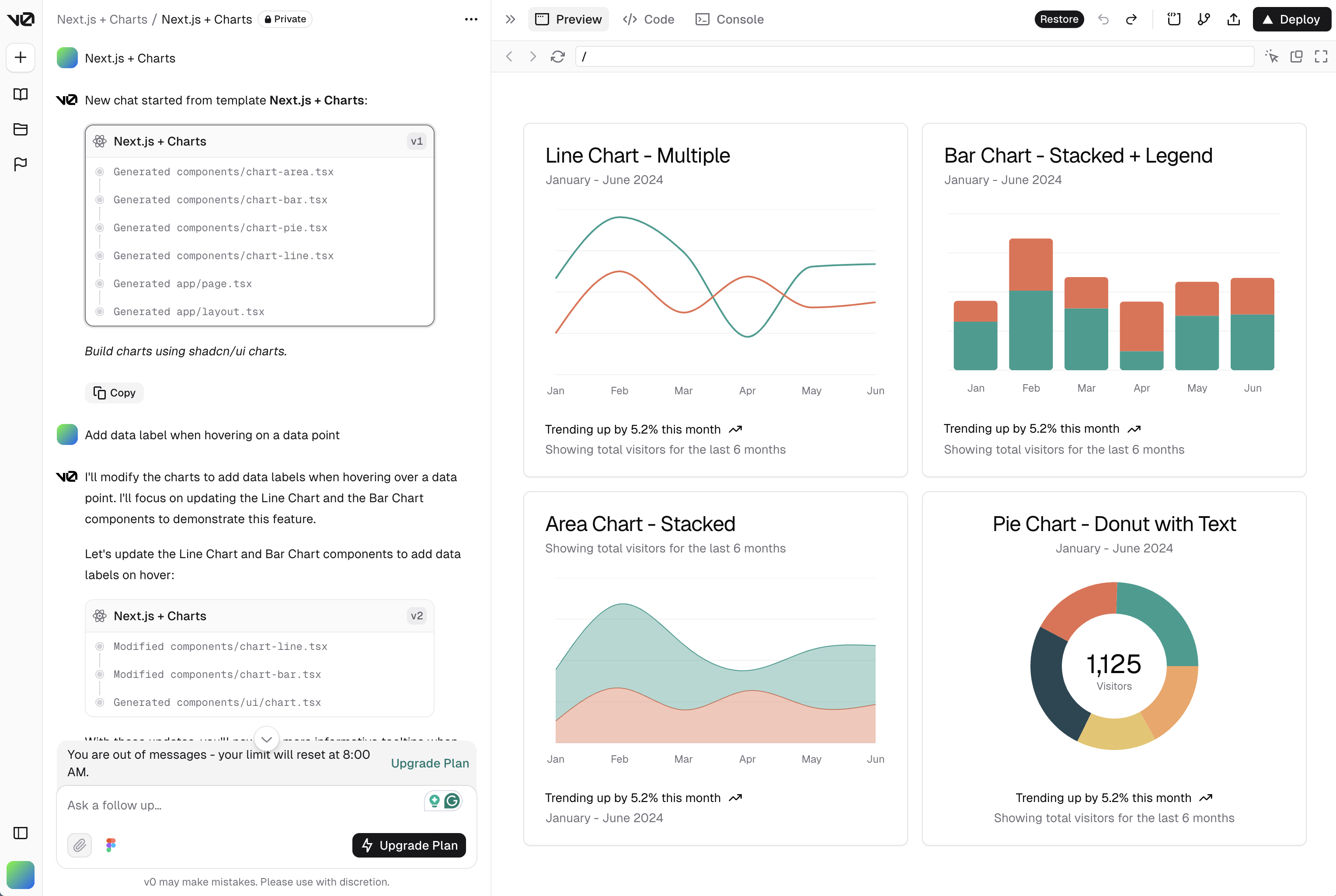This article explores how generative AI (Gen AI) tools can streamline product design workflows. Three specific use cases in research analysis, storyboarding, and prototyping will be mentioned because of their relevancy and application with Gen AI tools.
How AI Boom Impacts Product Design?
2024 marks a pivotal year for AI, driven by abundant data, resources, and opportunities. AI is revolutionizing industries like software development (e.g., Cursor AI), online browsing (e.g., Perplexity AI) — and product design is no exception, offering new ways to enhance productivity and creativity.
At CES 2025, Nvidia's CEO highlighted advancements beyond generative AI, introducing agentic AI — autonomous systems capable of independent decision-making (e.g., pharmaceutical discovery) — and physical AI, autonomous machines that interact with the physical world (e.g., Waymo’s robotaxi and Tesla’s Optimus humanoid robots).
 Four phases of AI evolution introduced by Jensen Huang, CEO of Nvidia, on Consumer Electronics Show 2025 (Image source: 2025 CES Nvidia keynote speech).
Four phases of AI evolution introduced by Jensen Huang, CEO of Nvidia, on Consumer Electronics Show 2025 (Image source: 2025 CES Nvidia keynote speech).
Product design is currently in a transitional phase, bridging generative AI and agentic AI, as most design related Gen AI tools are not yet fully autonomous / agentic.
Despite this, Gen AI tools offer significant advantages to product designers. They streamline tasks like drafting content, editing images, and generating ideas, allowing designers to dedicate more time to high-impact work, such as planning feature evolution.
 Some popular Gen AI tools focusing on content editing.
Some popular Gen AI tools focusing on content editing.
While many popular Gen AI tools specialize in content editing, this article highlights tools designed for research analysis, storyboarding, and prototyping — areas where Gen AI proves most relevant and applicable.
Use Case 1: Analyze Information Collected After Conducting User Research
User research still relies heavily on human effort. Common challenges include:
- Relying on memory to identify patterns, which may introduce bias.
- Difficulty finding and reviewing prior research documents.
- Stakeholders outside user research or design teams often forget user needs.
To address these challenges, tools like Google NotebookLM and Dovetail can be valuable. Google NotebookLM is an AI-powered research assistant that summarizes and generates fact-based insights from the data you provide, serving as a knowledge base for user research.
 Snapshot of using Google NotebookLM in one of user research conducted. According to Google, no data will be used to train NotebookLM.
Snapshot of using Google NotebookLM in one of user research conducted. According to Google, no data will be used to train NotebookLM.
Dovetail transforms research insights using AI. By analyzing scripts or interview videos, it offers flexibility for deeper analysis with manual input. Additionally, Dovetail can integrate with Slack or Teams, enabling stakeholders to extract research insights via chat-based queries.

Slack and Teams Integration with Dovetail that allows colleagues to extract insights easily from the chat-based interface (Image source: Dovetail).
However, we also need to consider some nuances.
- The quality of these tools’ output depends on the input data. Effective participant recruitment and well-structured questions remain crucial for successful research.
- Manually formulating insights strengthens our understanding of user behavior, while relying solely on AI tools may externalize knowledge.
These tools optimize productivity by accelerating research analysis, freeing up time for better research planning and concept design development.
Use case 2: Visualize New Solutions with Storyboarding
After conducting user research or generating concept designs, visualizing these ideas is essential to validate them with stakeholders. Storyboarding helps illustrate how a solution integrates into existing workflows or ideal user journeys.
The most common challenge in this use case is the time-intensive process of creating visuals that effectively convey the ideal journey.
To streamline this process, apart from Midjourney of Freepik Figma plug-in, tools like Storyboards.AI and KROCK Storyboard AI can help.
Storyboards.AI creates storyboards by specifying characters, story flow, and actions through prompts. Storyboard AI from KROCK.io simplifies the process further with an Excel upload function that can generate the storyboard in minutes.
 Text-to-storyboard feature introduction by KROCK.io (Image source: krock.io).
Text-to-storyboard feature introduction by KROCK.io (Image source: krock.io).
Storyboard is just a communication tool. Selecting the right format based on the context is equally important.
Use case 3: Visualise Complex Features with Prototypes to Facilitate Communication When Implementing Solutions
Prototyping often requires significant time, especially when reusable design components are unavailable. Low-fidelity prototypes, such as wireframes or paper prototypes, may save time but lack relatability for real-world applications for some audiences.
To address the above challenges, there are some Gen AI tools to consider. Uizard is popular, but the output quality is still debatable. Miro Prototype (hasn't launched publicly), will soon enable users to generate various fidelity of prototypes based on content on the canvas (e.g., text, sticky notes). Vercel v0, a standout option for me, is a chat-based website builder that generates and hosts UI with code using Next.js, React, Tailwind CSS, and shadcn UI. With prompts, you can visualize, preview, iterate, and deploy UI design easily. Instead of editing prototyping flows on Figma, with well-defined prompts, you can visualize them via Vercel v0 in minutes.

Text-to-UI on Vercel v0 enables product designers to visualize complex interactive prototype like dashboards and charts. Alternatively, you can also use co.dev, another text-based website generator backed by Y Combinator.
However, the output of the above tools cannot be considered as final design artifacts. It still requires manual input of business context and technical consideration. While they assist in visualizing and iterating concepts quickly, they are less suited for production-ready software development.
Looking ahead, tools may enable designers to modify Figma mockups and prototypes using existing component libraries or design systems with simple prompts, further enhancing efficiency.
The Key Problem to Address Is How Product Designers Should Keep Evolving in the Wave of AI
Gen AI tools are powerful when applied to the right use cases. However, we should avoid integrating AI for the sake of it. Like any tool, it’s essential to evaluate its cost-effectiveness —considering the time spent inputting context versus the time saved. This is particularly important as most current large language models are text-based.
In the wave of AI, product design remains a human-centric domain, requiring deep interaction, empathy, and contextual understanding that AI cannot yet replicate. We bring unique traits, such as the ability to perceive emotions, manifest human values, and innovate beyond existing frameworks.
Referring to Jensen Huang's concept of the four phases of AI evolution, agentic AI and physical AI are imminent. At its core, this progress centers on human-computer interaction design. While specific products or problems may evolve over the next decade, product designers will remain crucial in understanding complex human needs and behaviors. This transformation will also prompt us to redefine our value, reflect on our evolving responsibilities, and find fulfillment as AI tools become integral to workflows.
 Potential agentic AI applications in different industries.
Potential agentic AI applications in different industries.
I hope this article inspires you to explore Gen AI tools thoughtfully and equips you with a broader toolkit to enhance your design process. Contact us today to schedule a consultation to rethink your design process with us!

